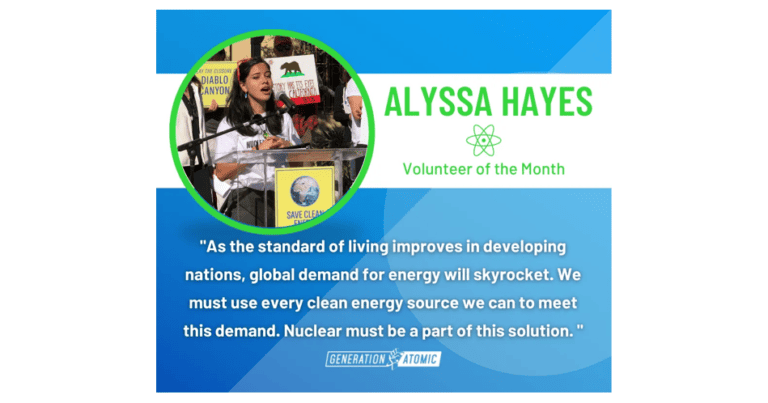Atomic Show #252 – Security, Future of Energy, HEU
On the evening of April 10, 2016, I met with two good friends and fellow nuclear energy bloggers for a wide ranging discussion about nuclear energy. We talked about the following topics:
- Nuclear energy’s role in the future of energy supplies
- Impact of the Nuclear Security Summits initiated by President Obama
- Demonization campaign being waged against the use of refined uranium (aka highly enriched uranium or HEU)
- Murky future of the US’s plutonium disposition program in light of the DOE’s FY2017 budget that cancels the Mixed Oxide (MOX) fuel fabrication facility
- Growing risk that California may experience a repeat of the 2000-2001 energy crisis this coming summer
- Compensating various sources of electrical power
- Destabilizing effects of the extension of the renewable energy PTC/ITC subsidies – which take $5 billion/year from taxpayers and give it to selected power source developers
My guests included:
Meredith Angwin, who blogs at Yes Vermont Yankee and the Northwest Clean Energy blog
Steve Aplin, who blogs at Canadian Energy Issues
I hope you enjoy the show.
Note 1: During our discussion about the compensation received by various electric power sources, Meredith mentioned several figures from an article that she wrote for Nuclear Engineering International. Here is a link to those figures. http://www.neimagazine.com/features/featurepay-for-performance-and-the-us-grid-4800656/featurepay-for-performance-and-the-us-grid-4800656-3.html.
The article titled ‘Pay for Performance’ and the US grid is an important source of information about this complex, but impactful situation. Meredith is becoming my “go-to” expert on the convoluted grid supply rules.
Note 2: We talked about the little understood change to the wind energy Production Tax Credit that was initiated in the 2009 American Reinvestment and Recovery Act. That act included a provision that allowed wind energy developers to opt for a 30% of project cost investment tax credit (ITC) in lieu of the $23/MW-hr Production Tax Credit. Because of the time value of money, nearly every project developer recognized that it was a more lucrative option because all of the subsidies were delivered less than a year after project completion instead of being spread over a ten year period.
The option also shifts performance risk from the developer to the government. There is a reporting requirement that only lasts for 5 years and has few teeth. In other words, it is entirely plausible for some of the projects to fail to generate the promised amount of power and for the developer or the project owner to simply give up. There is a low probability that anyone will be tasked with the effort required to obtain a refund of the ITC, which might be a substantial sum of money for a large project.
The option to take the ITC in lieu of the PTC was included in the renewable tax credit extension wedged into the Omnibus appropriation bill passed at the end of the congressional session just before the Christmas holiday.
When the ARRA first invented the option to tax an investment tax credit, renewable energy lobbyists successfully made the case that investment tax credits have no value if the developer has no taxes to offset and if even banks that one provided a market for transferring the ITC – at a favorable cost – also had no profits and no income taxes to offset. As a result, the ARRA included a provision that became known as Section 1603, which skipped the need to involve the IRS. Instead, the government appropriated funds and provided cash payments to the developers. Here is a 2009 NREL document that provides background and helps developers make the most beneficial choice in their particular situation.
While Section 1603 was in effect, the net payments to renewable energy developers over a 5 year period amounted to $25 Billion. Here is the latest summary report, dated January 16, 2016.
The cash payment option from section 1603 no longer exists. Banks are back into the business of profiting from the need for renewable project developers to find partners that actually have a sufficiently high tax bill to be able to take advantage of being able to receive hundreds of millions of dollars in credits in a single year. (A $1 billion project is eligible for $300 million in investment tax credits.)
For more information about the renewable energy tax credits that were included in the ominbus bill, please visit Good And Bad News For Renewable Energy Tax Credits.
Aside: Unless you are a renewable energy project developer or a supplier in the wind and solar energy market, there is no good news in the extension of these costly payments to power sources that frequestion claim to be cheap and mature. Those claims turn into predictions of job losses and corporate bankruptcies every time the expiration of their generous tax credit arrangements approaches. So far, the credits have been extended at the last minute — or retroactively — at least seven times. End Aside.
Podcast: Play in new window | Download (Duration: 1:21:46 — 75.0MB)
Subscribe: RSS




Recent Comments from our Readers
Rob I share some of your professional background. I also share your concern for those suffering in energy poverty. I…
US is a huge energy producer in a world that still has plenty of energy poverty. Over 700 Million people…
A good writeup Michael. A couple of poimts though. Actually water without precise chemistry control is very corrosive. All reactors…
Here’s a comment on a business case for HALEU. This is from a reading assignment from Raluca Scarlat, Assistant Professor…
Since posting my previous comment on this thread, I’ve learned about another property of MOX fuel that poses a problem…